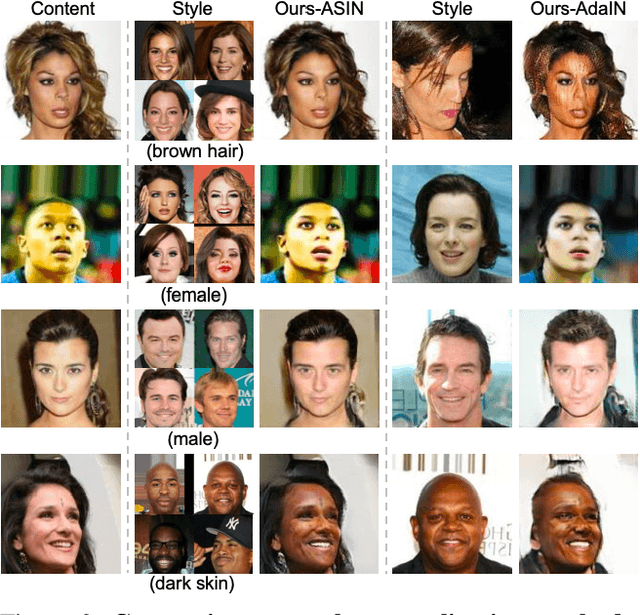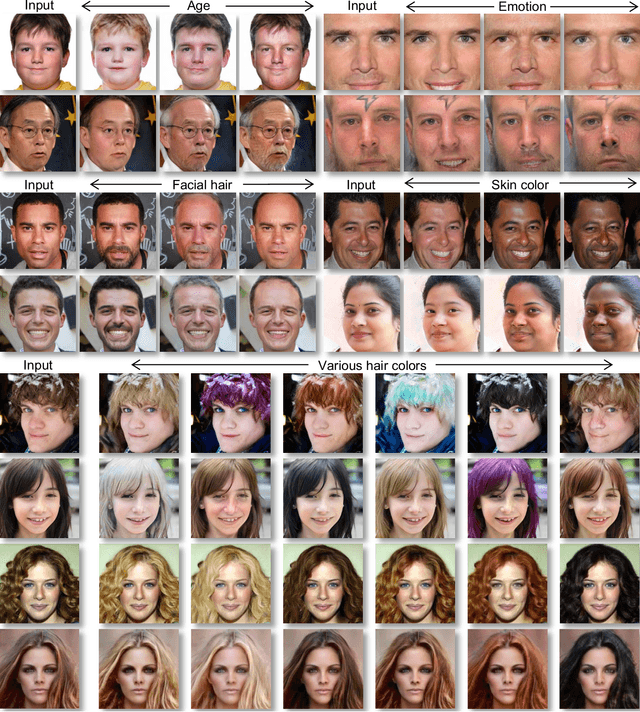Exploring Unlabeled Faces for Novel Attribute Discovery
Paper and Code
Dec 06, 2019



Despite remarkable success in unpaired image-to-image translation, existing systems still require a large amount of labeled images. This is a bottleneck for their real-world applications; in practice, a model trained on labeled CelebA dataset does not work well for test images from a different distribution -- greatly limiting their application to unlabeled images of a much larger quantity. In this paper, we attempt to alleviate this necessity for labeled data in the facial image translation domain. We aim to explore the degree to which you can discover novel attributes from unlabeled faces and perform high-quality translation. To this end, we use prior knowledge about the visual world as guidance to discover novel attributes and transfer them via a novel normalization method. Experiments show that our method trained on unlabeled data produces high-quality translations, preserves identity, and be perceptually realistic as good as, or better than, state-of-the-art methods trained on labeled data.
 Add to Chrome
Add to Chrome Add to Firefox
Add to Firefox Add to Edge
Add to Edge